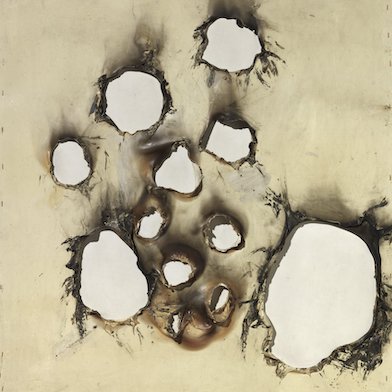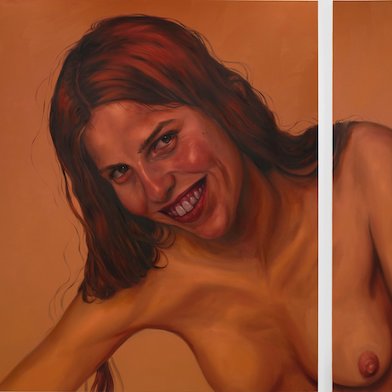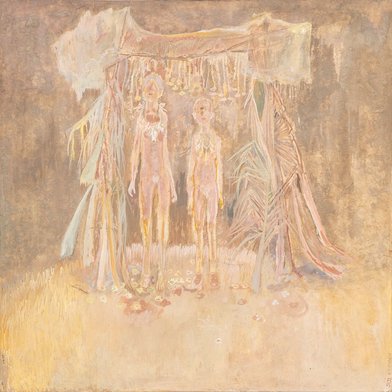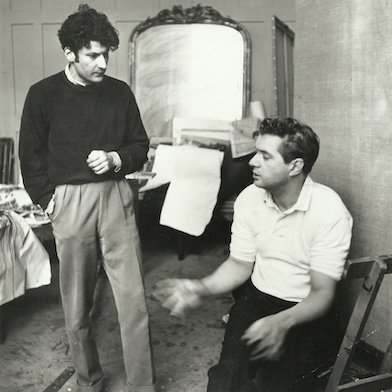Open: Tue-Sat 10am-6pm
Visit
Oliver Beer: Resonance Paintings - Cat Orchestra
Almine Rech, Tribeca, New York
Thu 14 Mar 2024 to Sat 27 Apr 2024
361 Broadway, NY 10013 Oliver Beer: Resonance Paintings - Cat Orchestra
Tue-Sat 10am-6pm
Artist: Oliver Beer
Almine Rech New York, Tribeca presents Resonance Paintings – Cat Orchestra, Oliver Beer's second solo exhibition with the gallery.
Installation Views
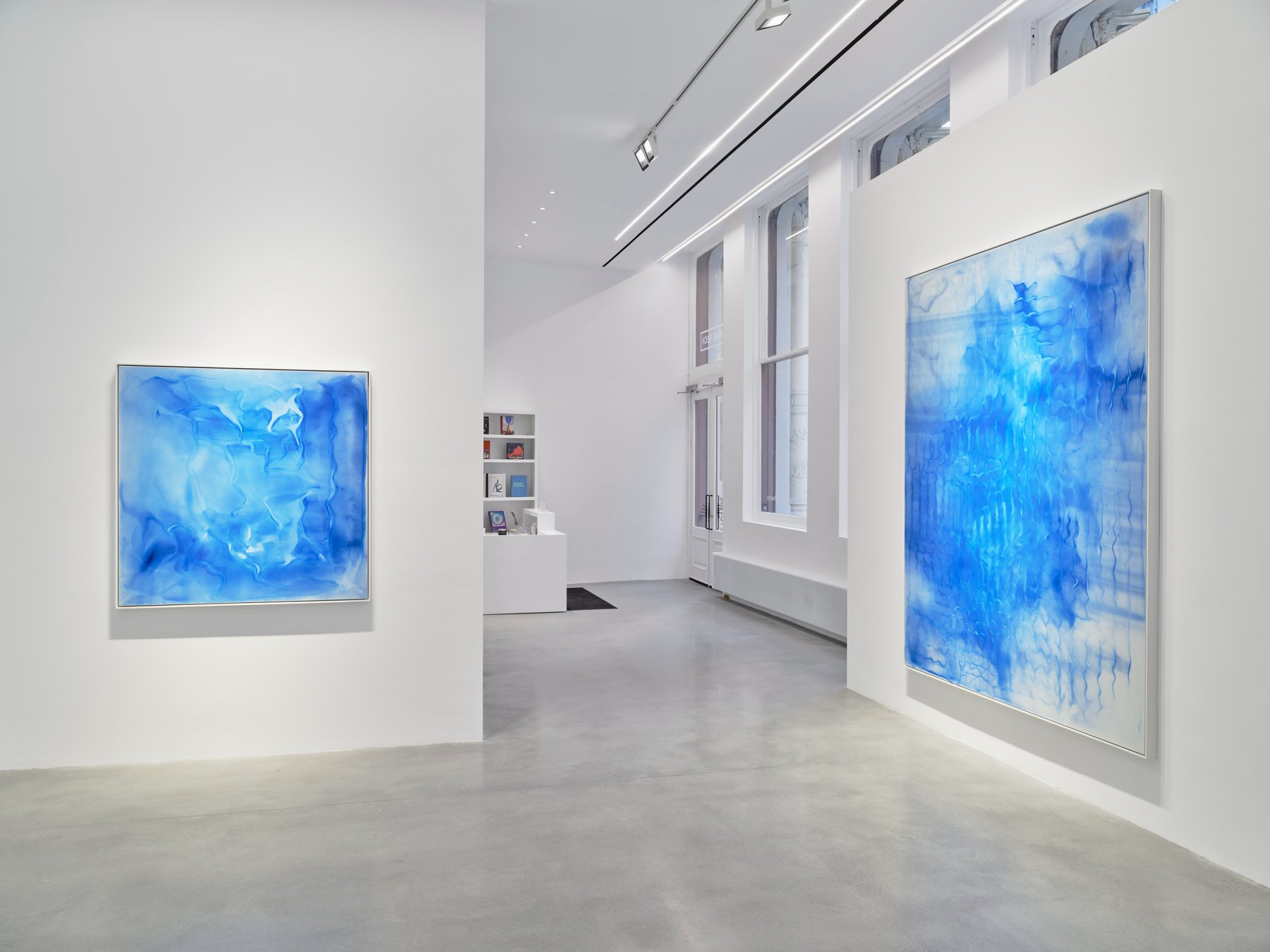
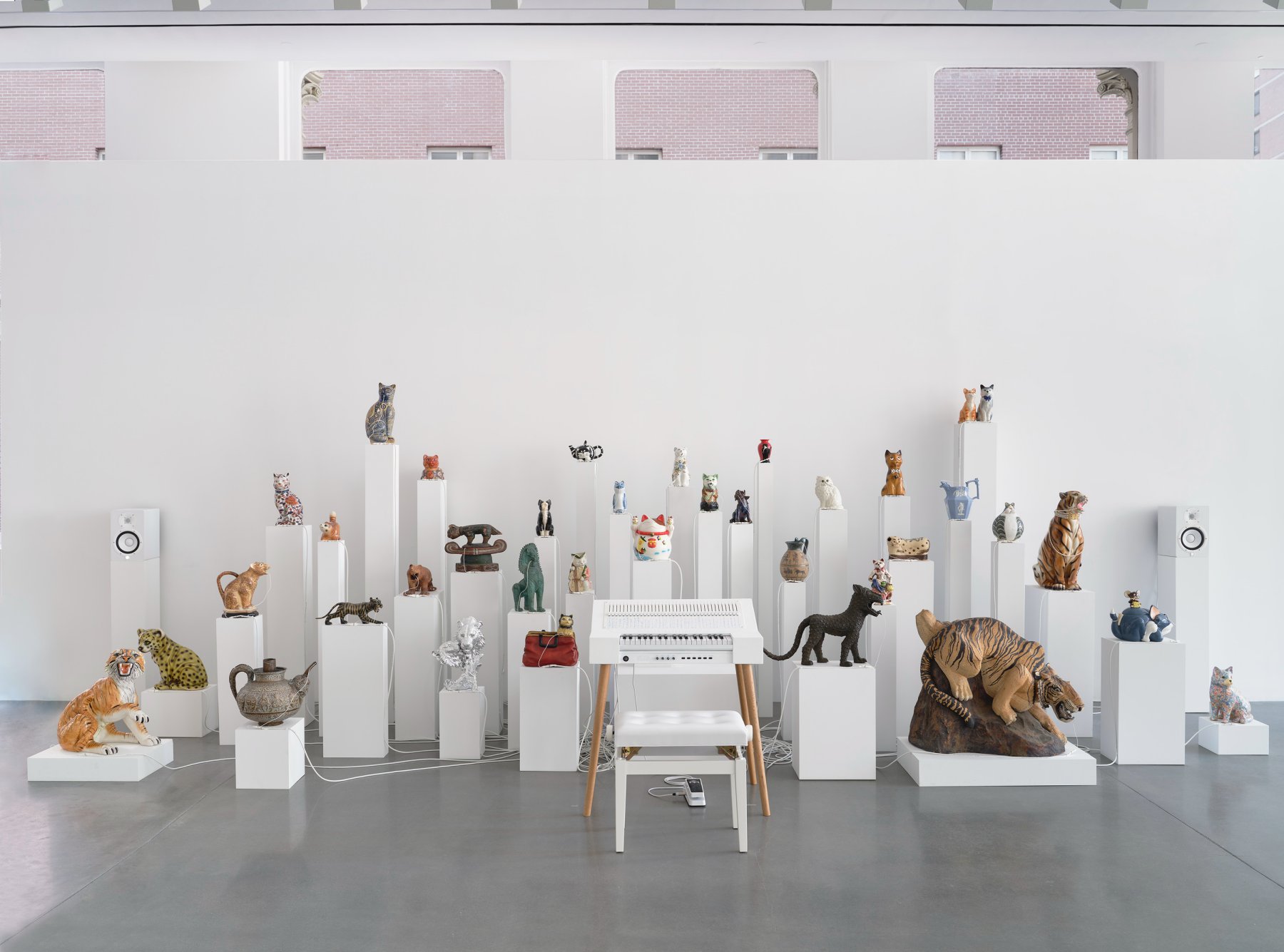
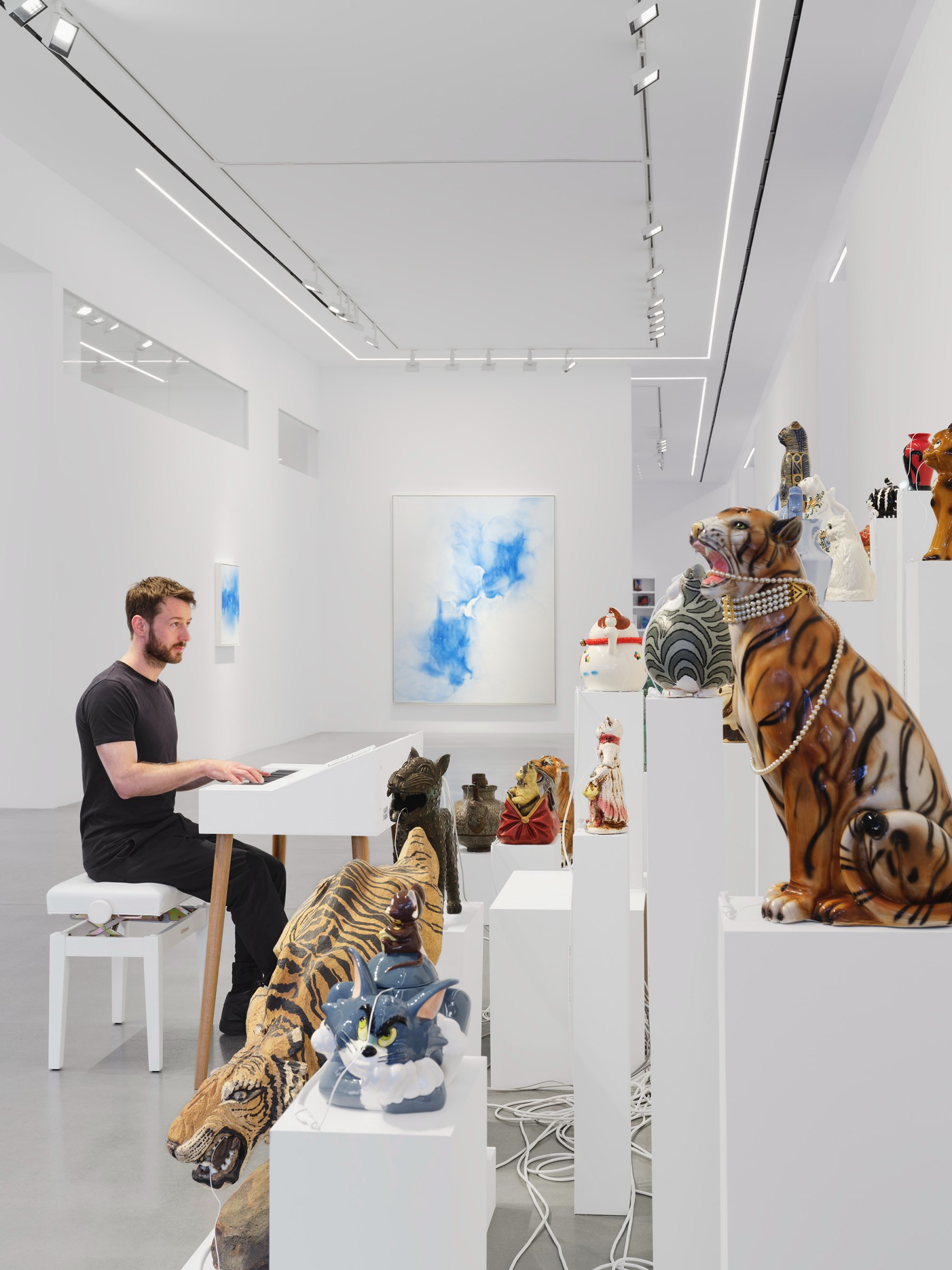
Everything sings, and in the beginning, a song was everything: the Word, the Om, a bang that echoes still today. The word you use for it may depend on your belief system. What’s certain, however, is that the universe is a symphony of cosmic vibrations, from the first murmurs of an infant’s heartbeat to the thunderous death of stars. Oliver Beer’s work shows us that if we listen carefully, we can hear them. He’s been listening for as long as he can remember, since the days he would modulate his own voice to match the harmonic pitch of his childhood bedroom. Every room – indeed, every vessel – has such a note, known as a Helmholtz resonance, and for several years the artist, who trained as a musician before studying fine art at the Ruskin School of Art, Oxford, has been trying to tune them.
For “Cat Orchestra,” Beer has tuned an entire band. A chorus of cat-shaped vases, ranging from the classical to the kitsch, are connected to live microphones that feed to a custom-built keyboard and synthesizer. Each key, when played, activates the microphone in the vessel whose resonance corresponds to that note, so that a fin-de-siecle French absinthe pitcher in the form of a cat playing a mandolin sings an F sharp, and a Japanese Maneki-neko sings a D. With this, Beer has achieved the dream of Athanasius Kircher, the 17th century occult philosopher who first imagined the cat organ, or “Katzenklavier.” That hypothetical instrument corralled a group of live cats inside a piano, arranged by voice pitch, so that when keys struck their tails, they would cry out in pain. Beer’s real version is far kinder to animals and far more revealing of the sounds we hold within ourselves.
An organ must be played, but orchestras can only be conducted. Beer amplifies the acoustics, but the sounds are already there. “Cat Orchestra” continues an inquiry Beer began at the Metropolitan Museum of Art in 2019, when he used similar engineering to amplify the ambient tones of historical vessels from the museum’s collection. One of the oldest objects that Beer turned his ear to was an Egyptian cosmetic jar in the shape of a cat from the 20th century B.C.E. “Everybody’s picking up on that feline beat,” sings Tom O’Malley in the 1970 Disney classic “The Aristocats,” as he introduces a pack of Parisian strays to the gospel of jazz. The line can be heard scoring Everybody wants to be a cat, a 16mm animation of the same scene from the film, each frame reimagined by schoolchildren at Beer’s invitation. Different hands, different beats, conducted together in delirious harmony.
If the otherwise inaudible vibrations within these vessels are difficult to comprehend, Beer has devised a way for us to see them. He created the “Resonance Paintings” on view in this exhibition by casting powdered pigment onto a canvas laid flat over an amplifier, on which distortions of the cats’ voices are played. Their abstract, lyrical forms are made by the careful manipulation of sound waves and musical harmonies alone. These singular works, perhaps the first in history to be painted by an invisible hand, are a demonstration of the science of cymatics, discovered in 1680 by Robert Hook, a near-contemporary of Kircher’s, who was also first to observe bacteria beneath a microscope. Their organic symmetries reinforce our modern understanding of the world as being shaped by unseen forces. Beer can tune canvases, too.
Kirchner was a famed alchemist, and in a way, so is Beer. Both transform cosmic energy into physical matter. Every atom in your body vibrates in synchrony with music, but only the bone in your ear translates it into the electrical current that reaches your brain. Beer’s work invites both our eyes and our ears to perform the same translation, and in the process come closer to grasping the ineffable. It’s the principle underlying string theory and countless faiths. A feline beat, if you will. According to O’Malley, “Everything else is obsolete.”
— Evan Moffit, writer, journalist and critic
